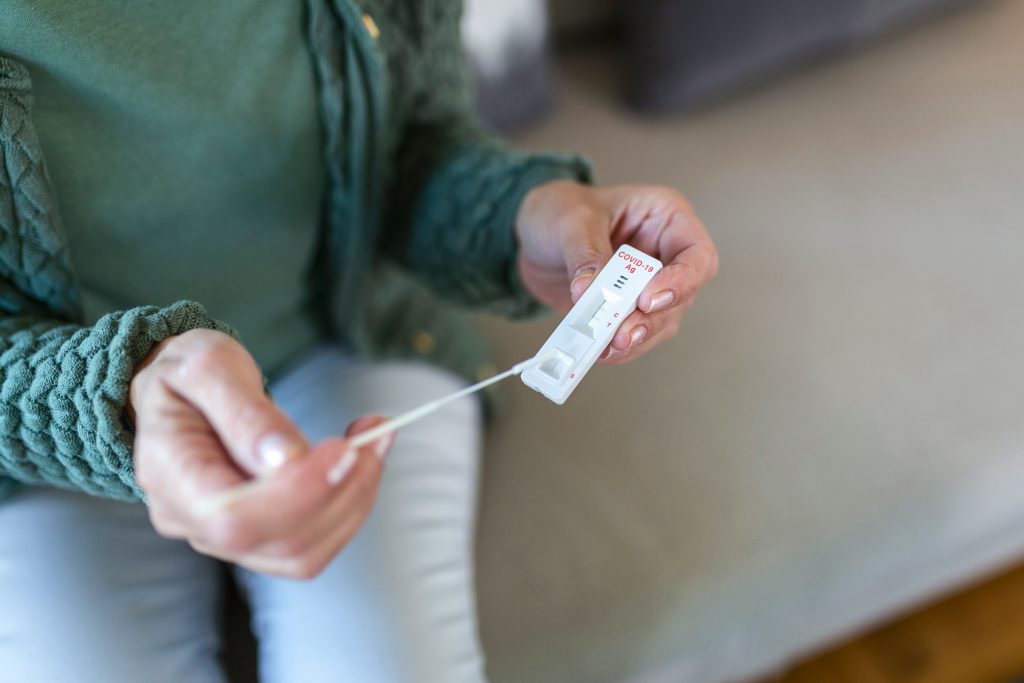Are At-Home COVID-19 Tests Adaptable for Multiple Virus Strain Detection? The Versatility of Self-Testing Kits Explored

Collaborative Post
Since the onset of the COVID-19 pandemic, rapid at-home tests have become a key method for individuals to monitor their health status. As the virus continues to mutate, the question arises: are these at-home tests designed to keep pace with the changes? Given the emergence of multiple virus strains, the adaptability of these tests is crucial for ensuring they provide accurate results. Your ability to self-test effectively could depend on the innovation behind these products.
Developers have been working to ensure that the lateral flow tests, which many people use for quick results, stay relevant against a backdrop of evolving virus strains. The detection capabilities and accuracy of these tests are under constant review as new variants of concern arise. It’s reassuring that these tests, including those that detect COVID-19, are being scrutinised for their effectiveness against a range of potential virus mutations.
Maintaining access to reliable testing is paramount to managing the pandemic. Therefore, the opportunity to buy lateral flow tests online that remain sensitive to the changing virus is essential for accurate and timely self-diagnosis, allowing you to take appropriate measures without delay.
Key Takeaways
- At-home COVID-19 tests are regularly evaluated for their effectiveness against various virus strains
- Improvements in test design aim to maintain the reliability of self-testing in the face of the virus’ evolution
- Access to adaptable and accurate self-tests is integral for timely self-diagnosis and pandemic management
Development of Multi-Strain Detection Tests
As the COVID-19 pandemic evolves, the demand for tests capable of identifying multiple strains is escalating. This critical advancement ensures that you stay informed and protected regardless of the virus’s mutations.
Current COVID-19 Strain Variants
COVID-19 has demonstrated a capacity for mutation, leading to various strains such as Alpha, Beta, Delta, and Omicron. Each variant exhibits different characteristics, which can alter transmissibility and vaccine efficacy. To safeguard public health, at-home tests that can accurately detect these diverse strains are paramount.
Scientific Principles Behind Test Adaptation
To understand how lateral flow tests work, it’s essential to grasp the basics of antigen detection. These tests are designed to identify specific viral proteins. When a new strain arises, scientists examine whether existing tests can still detect these proteins despite any genetic variations that may have occurred.
Technological Advances in Rapid Testing
In response to the mutating virus, technological innovations have led to the development of improved rapid tests. These tests provide a rapid method of detection and are continuously refined to maintain effectiveness. They integrate sophisticated algorithms and biomarkers to discern and confirm the presence of SARS-CoV-2, regardless of the strain.
By understanding these essential elements of multi-strain detection tests, you’ll appreciate the strides made in technology that directly contribute to managing the pandemic more effectively.
Challenges and Considerations
When you select an at-home COVID-19 test, it’s essential to consider their adaptability to different virus strains, which involves a few critical challenges and important considerations.
Regulatory Approval Processes
Before any at-home COVID-19 test can be marketed to you, they must go through strict regulatory approval processes, which differ from country to country. These approvals ensure that tests meet the required standards for safety and effectiveness. However, the fast-paced evolution of the virus can lead to delays in test availability as developers strive to meet these strict regulatory requirements with each new variant.
Global Distribution and Accessibility
Global distribution plays a key role in the availability of at-home testing kits. Tests need to be accessible in all regions, including low-income countries, but logistical hurdles and economic disparities can limit distribution. Additionally, the demand for tests often spikes during wave peaks, impacting your ability to readily procure them.
Accuracy and False Positives/Negatives
Test accuracy is important in containing the spread of the virus. The sensitivity and specificity of the tests can affect the rates of false positives or negatives. Misidentification of strains may lead to a false sense of security or unnecessary isolation, impacting your life and the lives of those around you. It’s important to choose a COVID test that is reliable and validated against the prevalent strain.
Understanding these challenges helps you to make informed decisions about at-home COVID-19 testing amidst an ever-changing landscape of variants.
Conclusion
At-home COVID-19 tests have evolved to offer you the convenience and accessibility that can aid in the timely detection of various virus strains, including emerging variants. Due to the adaptability of certain molecular diagnostic methods, your ability to identify SARS-CoV-2 genetic material remains effective, even as the virus undergoes mutations. The accuracy of these tests is critical for informed decision-making regarding isolation and treatment, helping you manage transmission risks better.
Your continuing vigilance, combined with the utilisation of at-home tests, plays a key role in controlling the spread. Bear in mind the importance of following up with professional healthcare advice should you test positive. You must keep abreast of updates regarding the effectiveness of at-home tests to ensure the accuracy of your assessments in the face of an ever-evolving virus.
Image Unsplash+

[…] cases early, which can significantly reduce the transmission rates. As the virus evolves, the adaptability of self-testing kits is vital to continue offering reliable […]